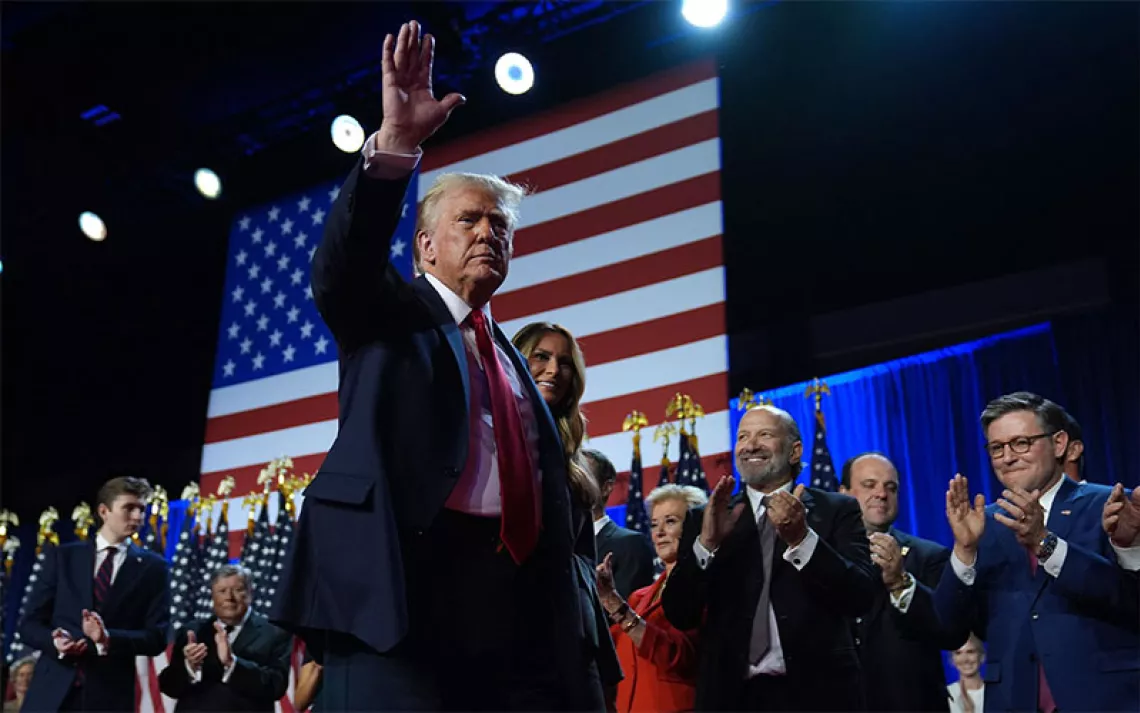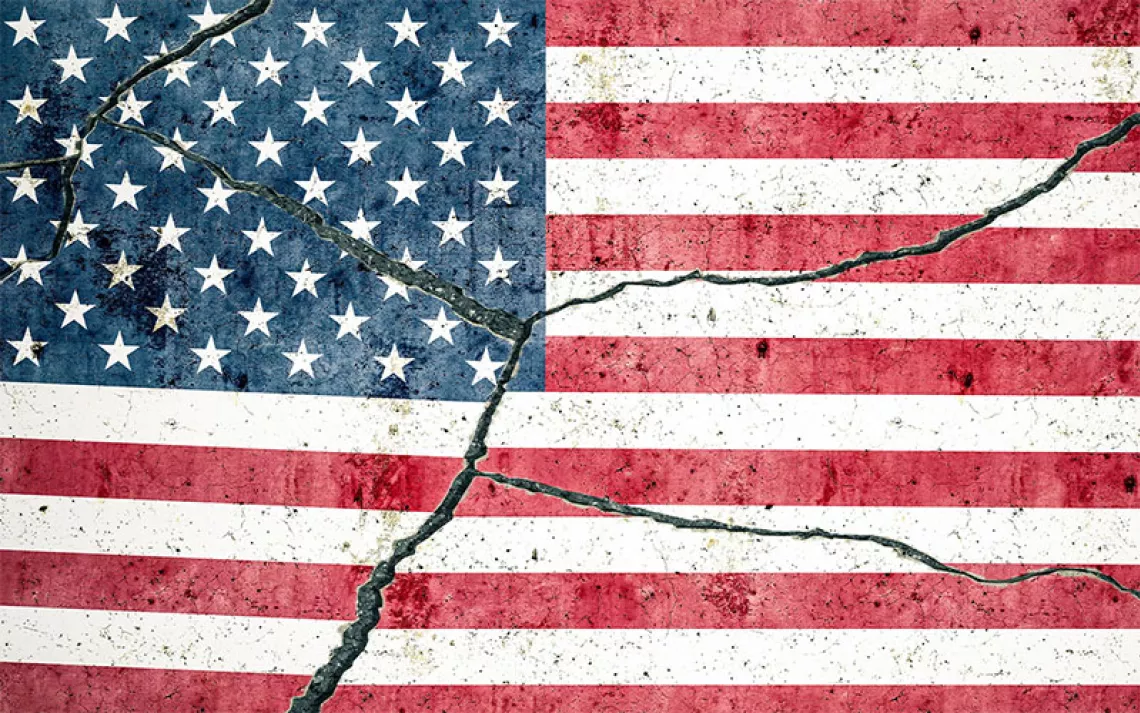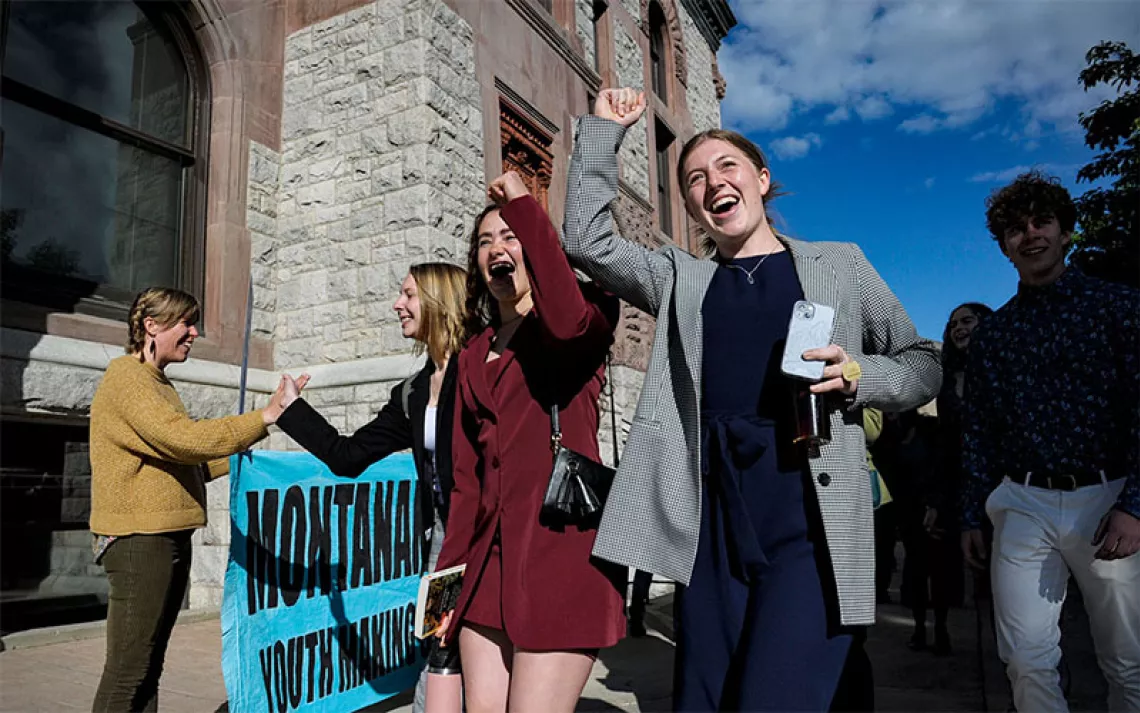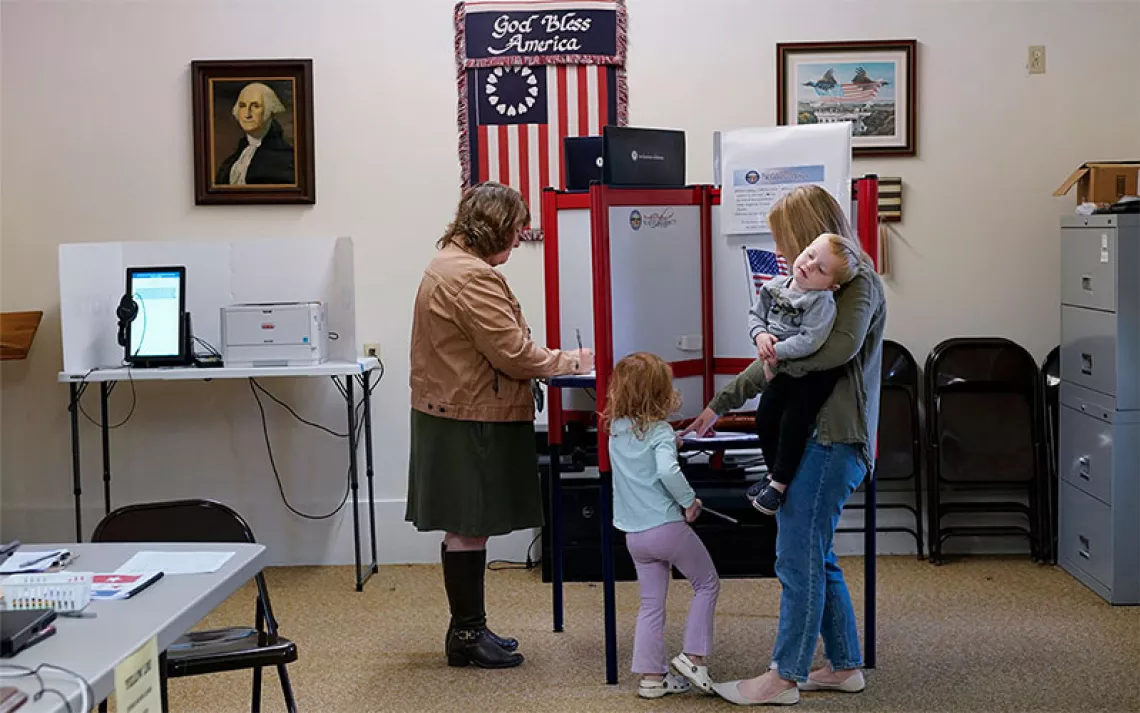Haaland’s Nomination Could Signal Pivot Point for Tribal Sovereignty
Could Native Americans have their stolen lands returned?

The Biden administration's nominee for Secretary of Interior, Rep. Deb Haaland, D-N.M., speaks in Wilmington, Delaware, Saturday, December 19, 2020. Photo by AP Photo/Carolyn Kaster.
The day after news broke that Joe Biden had nominated Representative Deb Haaland to be interior secretary, Gabriella Cazeres-Kelly woke up to an unusual amount of Twitter engagement—she’d received dozens of “likes” on a post referring to the Laguna Pueblo congresswoman as her “Auntie Deb.”
“It finally occurred to me that y’all might not know...” Cazeres-Kelly, a T’ohono Oodham citizen explained to her online audience. “In the Native community, we often refer to our respected community as Auntie or Uncle, even if we’re not biologically related.”
The term of endearment was emblematic of a wave of euphoria that continues to sweep across Indian Country as Native Americans everywhere celebrate the historic moment: the first time ever that an Indigenous person has been nominated to a cabinet secretary position. The agency she’s been asked to lead represents the one institution that has played a central role in the nation’s long-running abuse of Native Americans.
“This moment is profound when we consider that a former secretary of the interior once proclaimed his goal was to, quote, ‘civilize or exterminate us,’” Haaland said in her nomination acceptance speech Saturday.
She was referencing an 1851 remark by former secretary Alexander H.H. Stuart, spoken the same year that the United States entered into the Treaty of Fort Laramie with several Native nations from the Great Plains. Nearly two centuries later, that pact has a symbolic and significant place in today’s timeline as Americans everywhere imagine what a Haaland Interior Department might look like. Could Native Americans have their stolen lands returned?
The Fort Laramie Treaty secured millions of acres of the Black Hills to the Oceti Sakowin, or the Seven Council Fires (bands) of the Great Sioux Nation. But like the majority of the 375 treaties signed with tribes between 1778 and 1881, the federal government broke the Fort Laramie agreement, and the Black Hills, believed to be rich in gold, were taken from the tribes. Forty years ago, the US Supreme Court upheld that the Indigenous lands had been stolen but ordered restitution only: about $1.5 billion in today’s dollars. Tribal leaders, back then, rejected the money. They just wanted the land back.
In July, when President Donald Trump held an Independence Day campaign rally at the foot of Mount Rushmore, about 150 Indigenous activists and their allies renewed the call to return the Black Hills. The Indigenous nonprofit organization NDN Collective led a road-block demonstration, which tapped into the nation’s deep racial tensions spurred by the murder of George Floyd—a reckoning that has exposed America’s colonization of Indigenous lands.
NDN Collective helped lead a spirited social media campaign behind Haaland’s nomination, with memes and other messages pressuring the Biden transition team. Its most vocal member was senior media fellow Julian Brave NoiseCat, who also serves as vice president of the progressive think tank Data for Progress.
When PBS NewsHour’s Hari Sreenevisan asked whether the Department of Interior should start returning Indigenous lands back to the tribes under Haaland’s leadership, NoiseCat replied with an enthusiastic, “Absolutely.”
“I think that there is this growing movement for land return for Native people and of course, the policies implemented by the next secretary of interior, hopefully, Congressman Haaland, once she's nominated and confirmed, will help advance that vision,” said NoiseCat.
If the Senate should confirm Haaland, her appointment is likely to be paired with more organized pressure brought by the well-financed Indigenous activist groups who boosted her nomination in prompting demands for Indigenous land restoration, racial equity, and climate justice.
Along with New Mexico senators Tom Udall and Martin Heinrich, there was another Native American being considered for the nomination, Michael Connor, a tribal citizen of Taos Pueblo and a career Interior bureaucrat. What he lacked in “star power,” according to one journalist’s assessment, he made up in policy experience, particularly involving water rights for tribes—another symbolic narrative given the pueblo’s recent anniversary celebrating the return of their sacred Blue Lake.
But Native activists and their allies largely ignored Connor as a contender, seemingly preferring Haaland’s storied struggle—a single mother who, in her 60 years, has encountered homelessness, relied on food stamps, and is still paying off student debt from law school.
In this way, Haaland is relatable to Natives like Cazeres-Kelly. On Election Day, she became the first Native American elected to a county-wide position for Pima County Recorder, a down ballot office in Arizona where Native American voters have chronically been overlooked. Representative Haaland, seeing the importance of her campaign, endorsed the progressive Indigenous Democrat.
“As an Indigenous leader, I understand how important it is for my community to see themselves represented in leadership at every level,” Haaland wrote. The words fell on the page with the same sincerity with which the one-term congresswoman accepted Biden’s nomination, aware of the extraordinary step it represents. She also worked to hold back impossible tears of joy; I think we all did.
 The Magazine of The Sierra Club
The Magazine of The Sierra Club



